Another issue, another homologation special. BMW enters the fight with improved aero and a claimed 315km/h top speed for its 2023 M 1000 RR
Those over a certain age will forever associate BMWs with virtues such as practicality, steadfast reliability and, well, comprehensive weather protection. Wholesome, sensible things, but possibly boring. However, for those under the age of 30, the defining qualities of a BMW motorcycle like the M 1000 RR are more likely to be brutal power outputs and outrageous performance. Crazy, fun things.
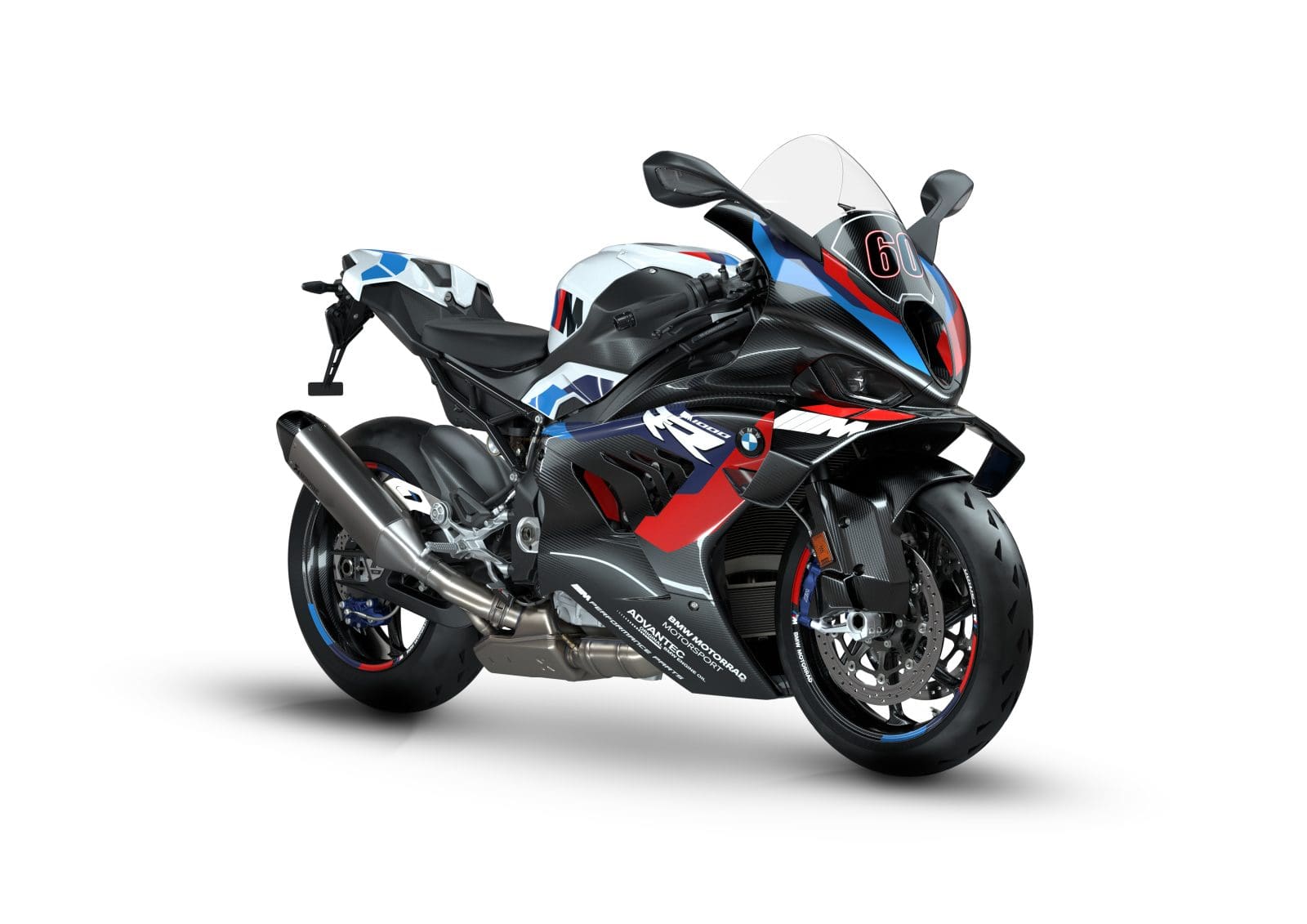
Times have changed and BMWs have changed more than most. Enter the Ms – BMW’s relentless push to be fastest and first on the racetrack and a sporting ultimate on the road. It’s doing it with the M 1000 R naked, the forthcoming M 1000 XR adventure tourer and this, the M 1000 RR superbike. Who would have imagined this from BMW 20-plus years ago?
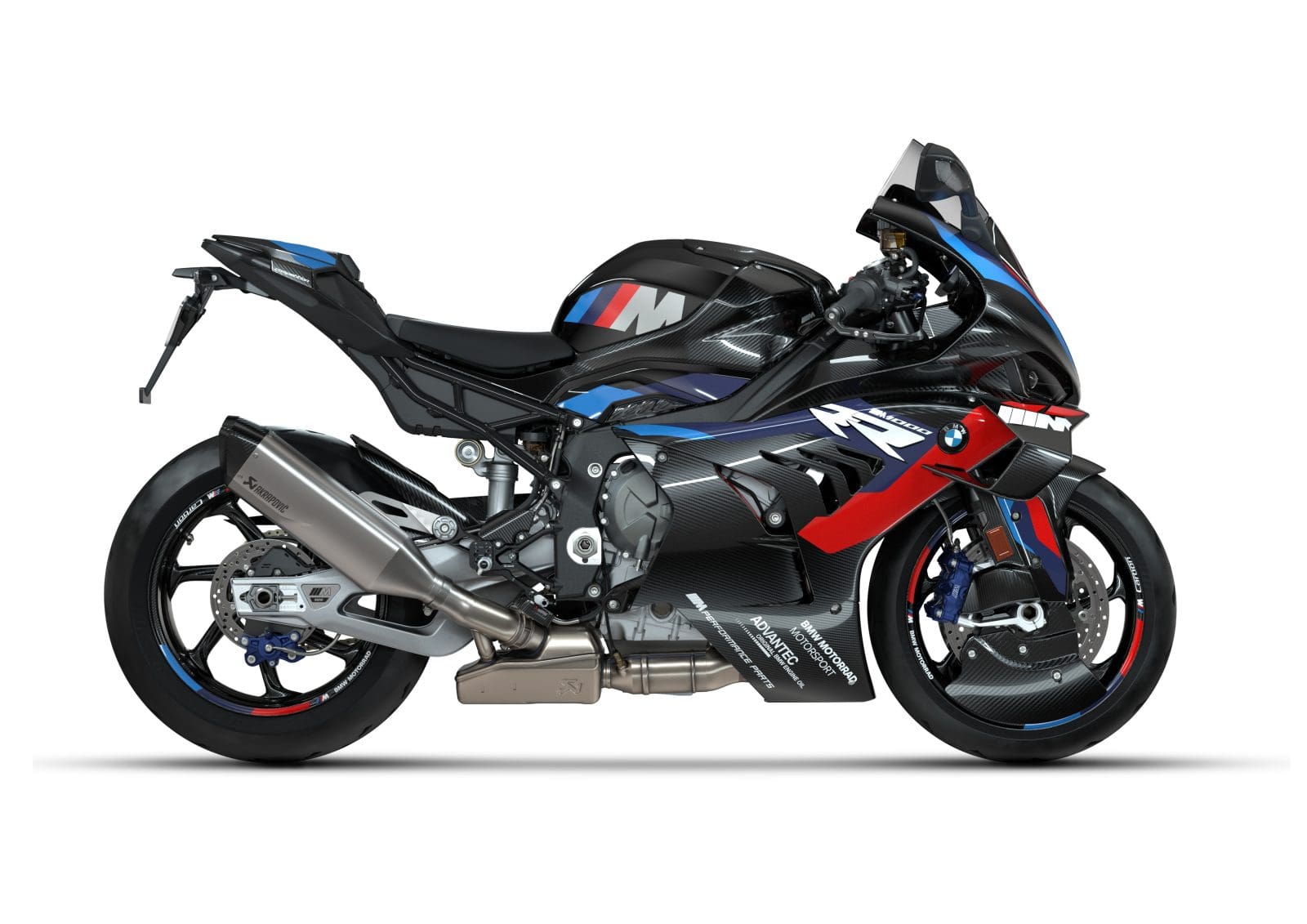
Essentially a homologation special for superbike racing, the M 1000 RR has been in production since 2021 and comes to market this year with the same cutting-edge 156kW (209hp) ShiftCam engine as last year’s machine but with a raft of extremely clever aero developments.

Despite no change to its power output, the 2023 M 1000 RR and even racier M 1000 RR M Competition variant – the bike I’m testing – are faster than the 2022 M, both through the corners and on the straights. Top speed has increased from 306 to 314km/h thanks to slippery new distinctive carbon bodywork, while huge new wings increase downforce by a sizeable 40 percent. BMW claims the wings add so much cornering grip that corner speeds and lean angles are noticeably higher – which should, in theory, cut lap times.

The drag reduction is thanks to a new fairing that creates a cleaner airflow around the rider with a taller screen reminiscent in size to those used at the Isle of Man TT and a bubble-shaped nose, a reshaped tail unit and side panels and, on the M Competition model, front brake cooling ducts integrated into a new front mudguard.
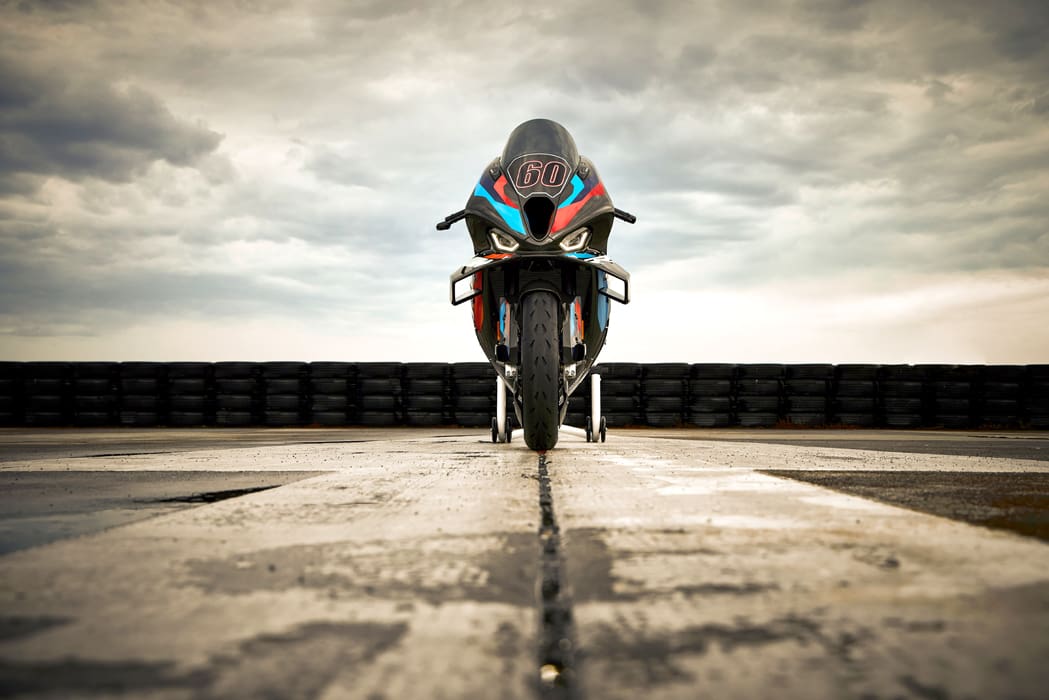
AMCN was invited to test the M 1000 RR at the breathtaking Mugello circuit in northern Italy. Not only did we have the Tuscany circuit’s sublime asphalt to help us test all this aero theory, but also two-time World Superbike champion, Wollongong’s Troy Corser, to show us how to extract the best from the beast.
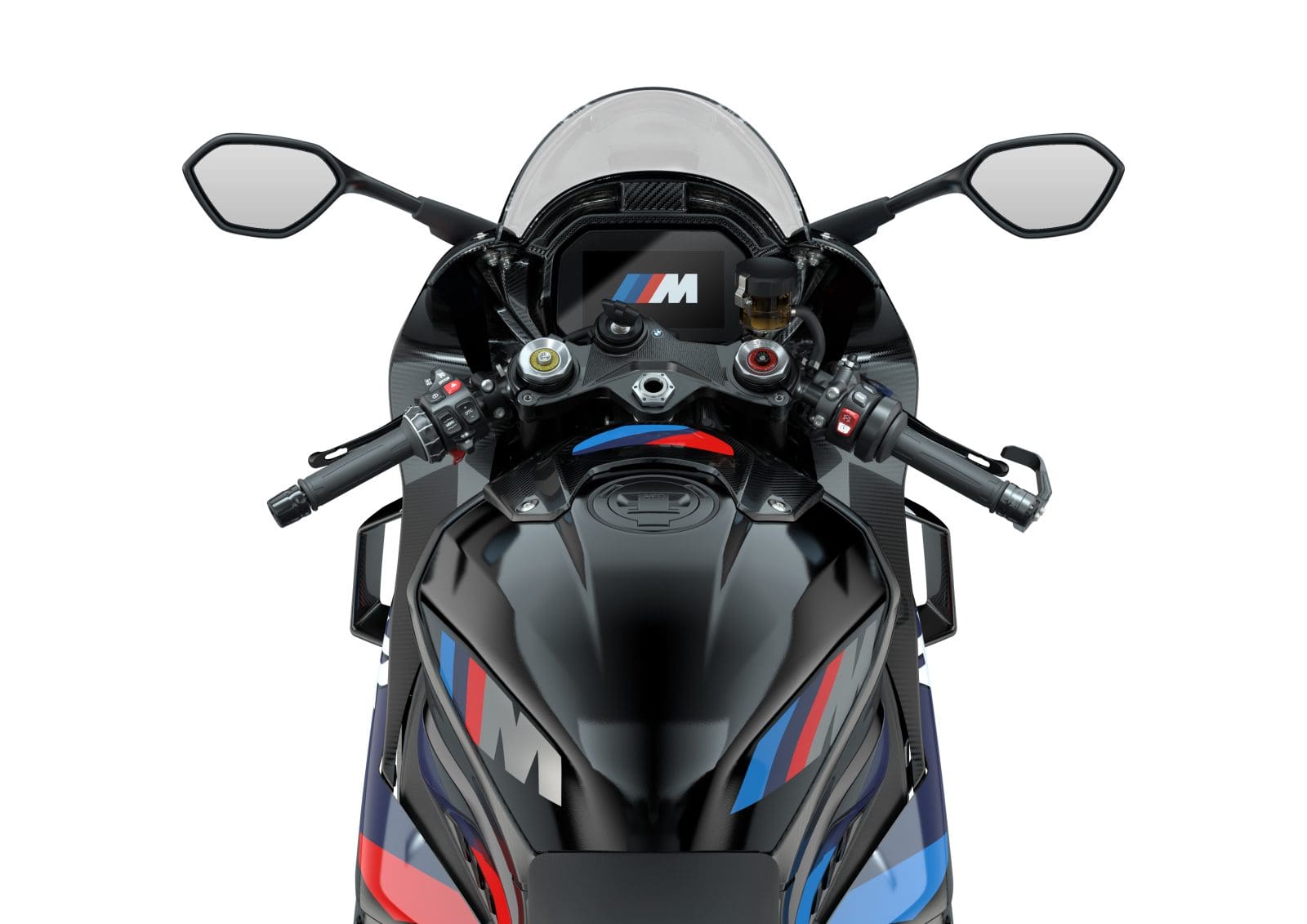
As a homologation special, the M lacks the DDC semi-active suspension found on the S 1000 RR, so we first had to spend a little time setting up both ends to match the track and Bridgestone slick tyres. Once done, with help from the Racing School Europe and Corser, I had the opportunity to push the limits in safety over the three days of rigorous testing.
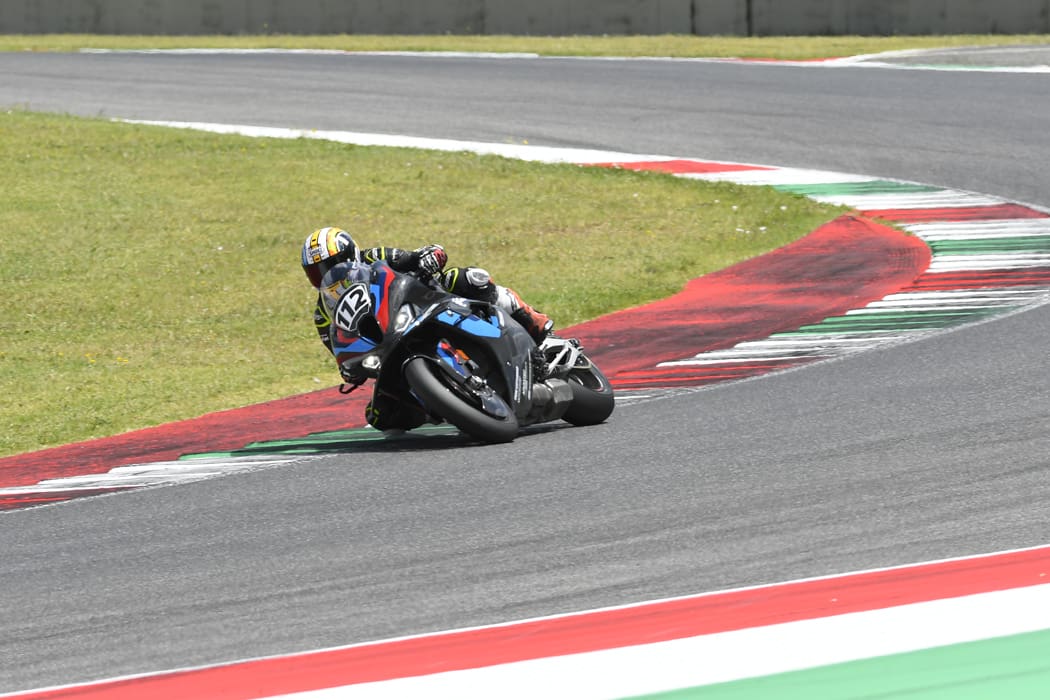
I’ve ridden Mugello many times before, but I don’t think I’ve ever lapped so quickly and with such ease. While the M looks angry enough to scare your children, out on track it carries lots of calm and composed corner speed, fueling its rider with the self-confidence of a pro.

The blend of chassis, suspension and new aero package gives you the minerals to seriously attack corners. Even after three days of fast testing the M was still taking me by surprise as it ran ever faster into the apex. At what I would consider to be extreme lean angles, it felt consistently planted and controlled – but still nowhere near the limit despite elbow sliders skimming across the painted historic kerbs of Mugello.
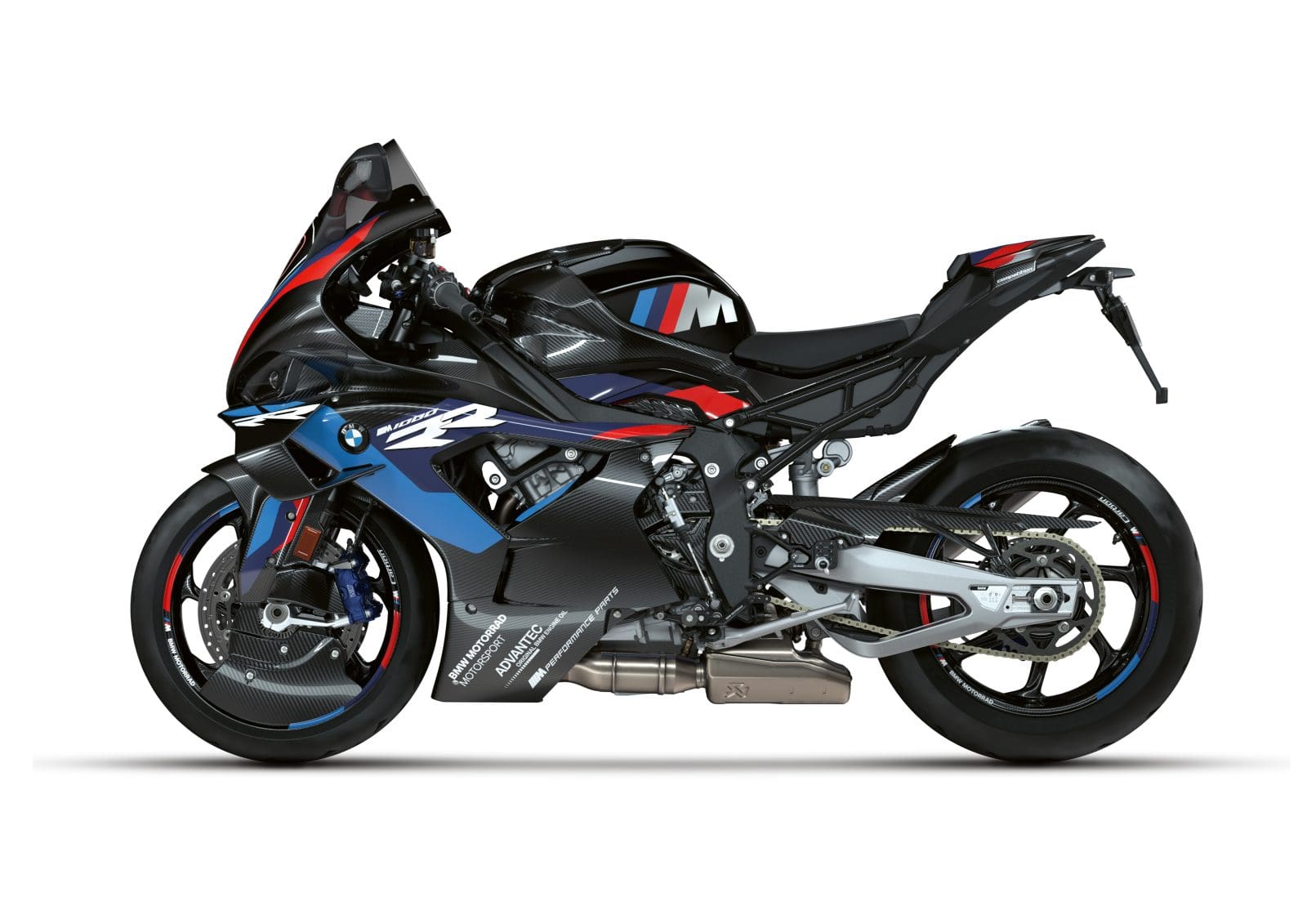
The M’s captivating race dash not only shows brake pressure and DTC, but also lean angle. This data is live while riding but it’s more sensible and easier to check once back in the pits. My bike’s data revealed that it was regularly achieving 56 to 58 degrees of lean angle, while Corser was achieving a lean angle of over 60 degrees on the same bike. For reference: Alastair Seeley actually touched his M’s wings down at the North West 200 in May, and does so in British Superstock.
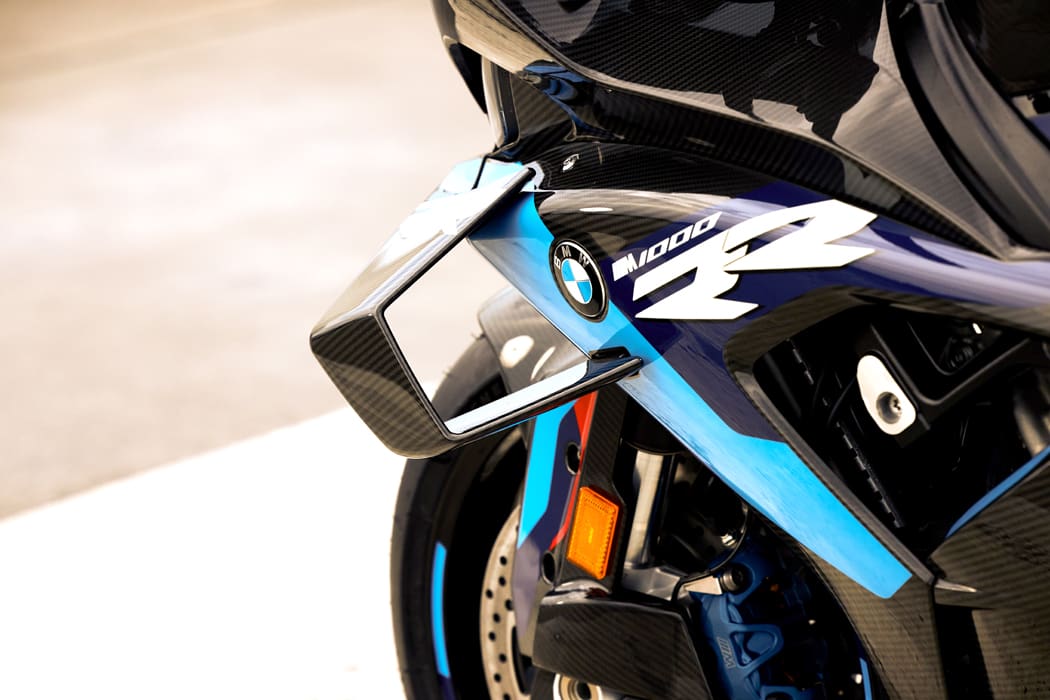
It’s hard to test or verify how much the wings improve the riding experience or reduce lap times, but the M’s feel, feedback and stability at the front-end are intoxicating, lifting normal track riders like me to a level never experienced beyond a video game.

According to BMW, the new wings produce 1.6kg more downforce at 150km/h than the 2022 M 1000RR; 2.8kg more at 200km/h; and 4.3kg more at 250km/h. At 300km/h, which was hit almost every lap on the front straight at Mugello, the new M produces 22.6kg of downforce – 6.3kg more than before.
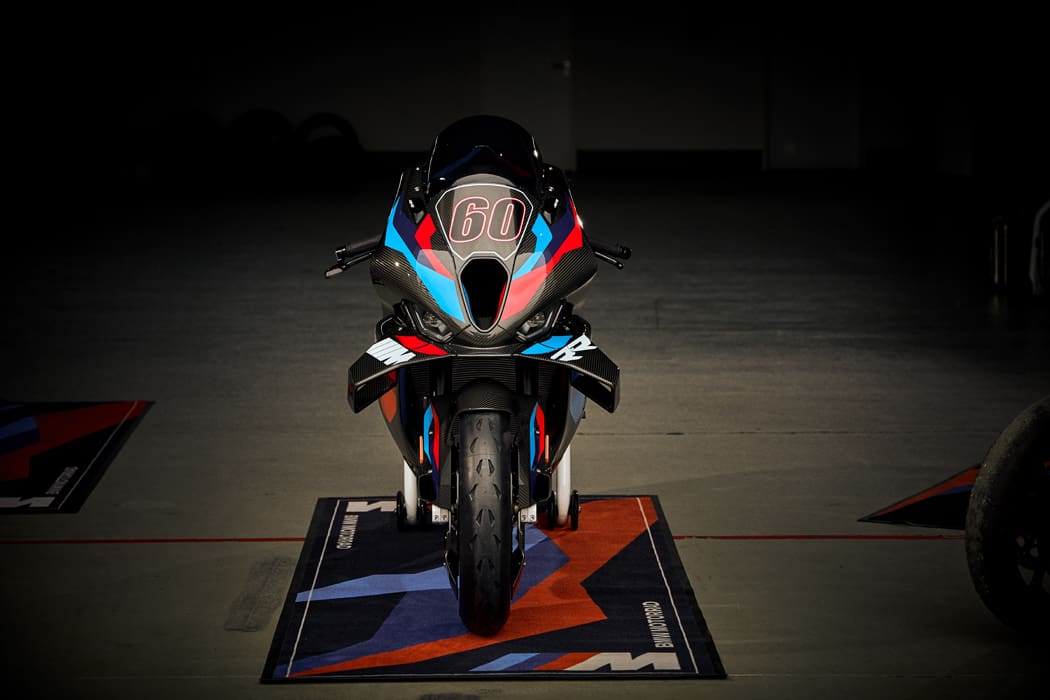
While downforce is measurable, it’s hard to calculate how much the wings improve the riding experience or reduce lap times. Fact is, when the M hit the notorious crest at the end of the straight at near 300km/h, it remained planted. So stable and predictable, in fact, that I could in theory have taken one hand off the ’bars to wave at our photographer had there not been some heavy braking to be done for Turn 1.
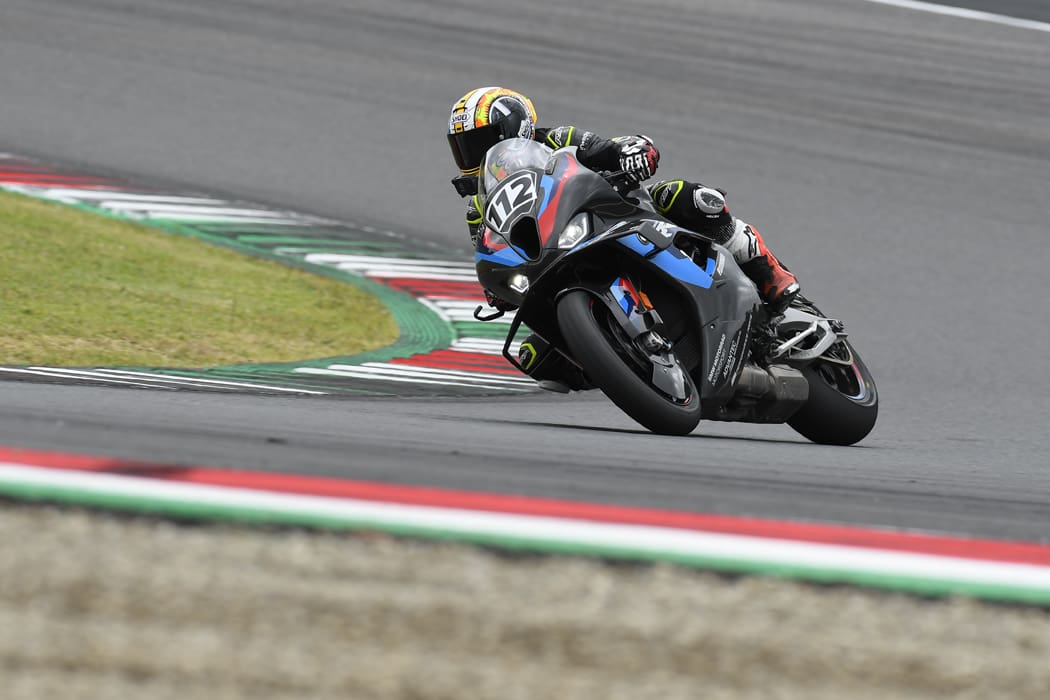
For comparison, I jumped on the standard S 1000 RR – a bike that drips with racetrack competence and speed, which Deano tested in Almeria earlier this year (AMCN Vol 72 No 14) – for a few fast laps, and immediately understood not just how much quicker the M steered, but also how much easier it was to ride. The M is lighter – 193kg (the Competition version I’m riding weighs 191.8kg) against 197kg of the stock S 1000 RR – while its carbon wheels help to significantly reduce unsprung weight and steering inertia.
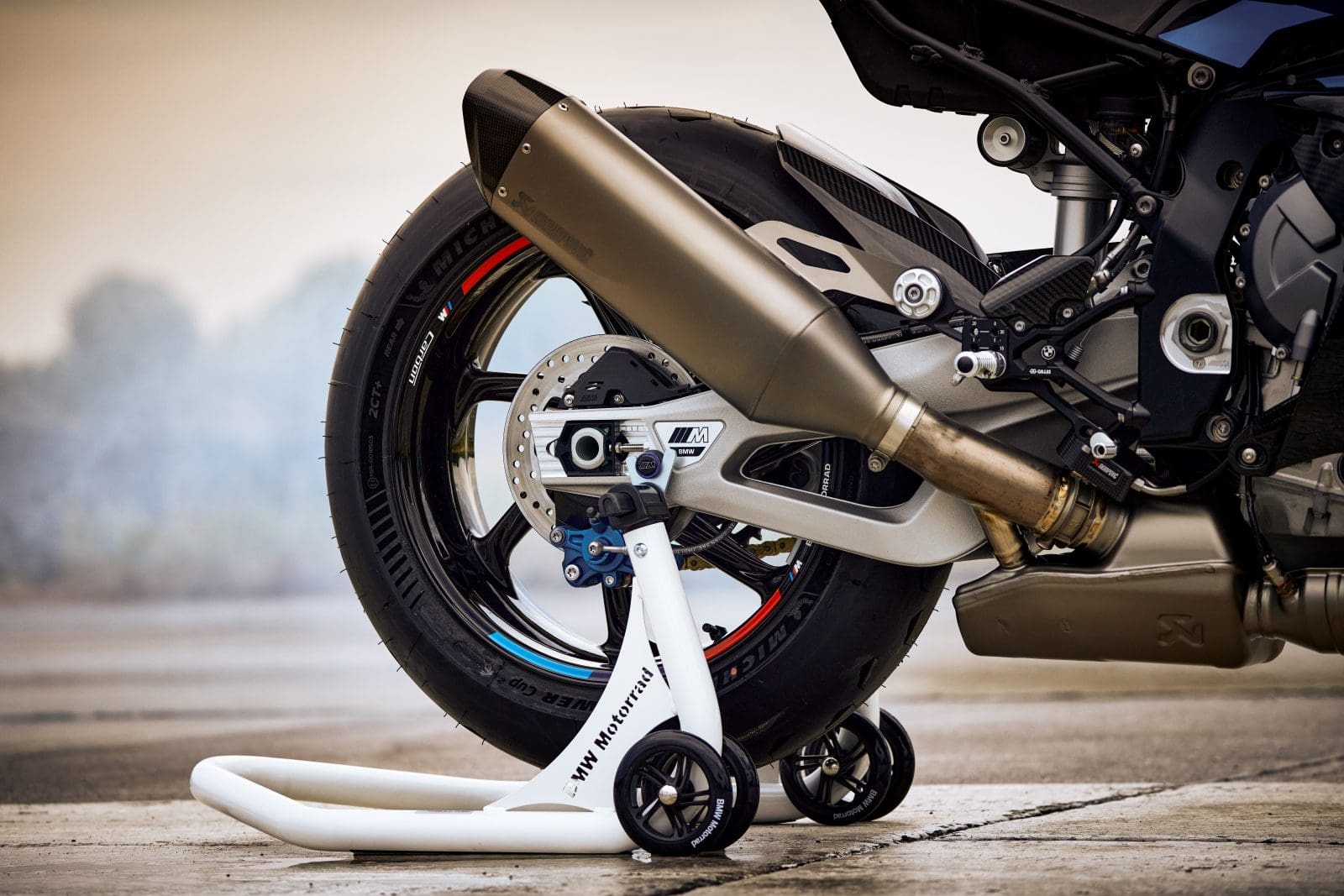
What was truly surprising, though, was the difference between the aero packages of the two bikes. The M’s larger screen and wider carbon bodywork are easier to get in behind and make 300km/h feel more like 200. It also took more physical effort to hold on when riding the
S 1000 RR, and I assume this difference would be felt more by larger riders.
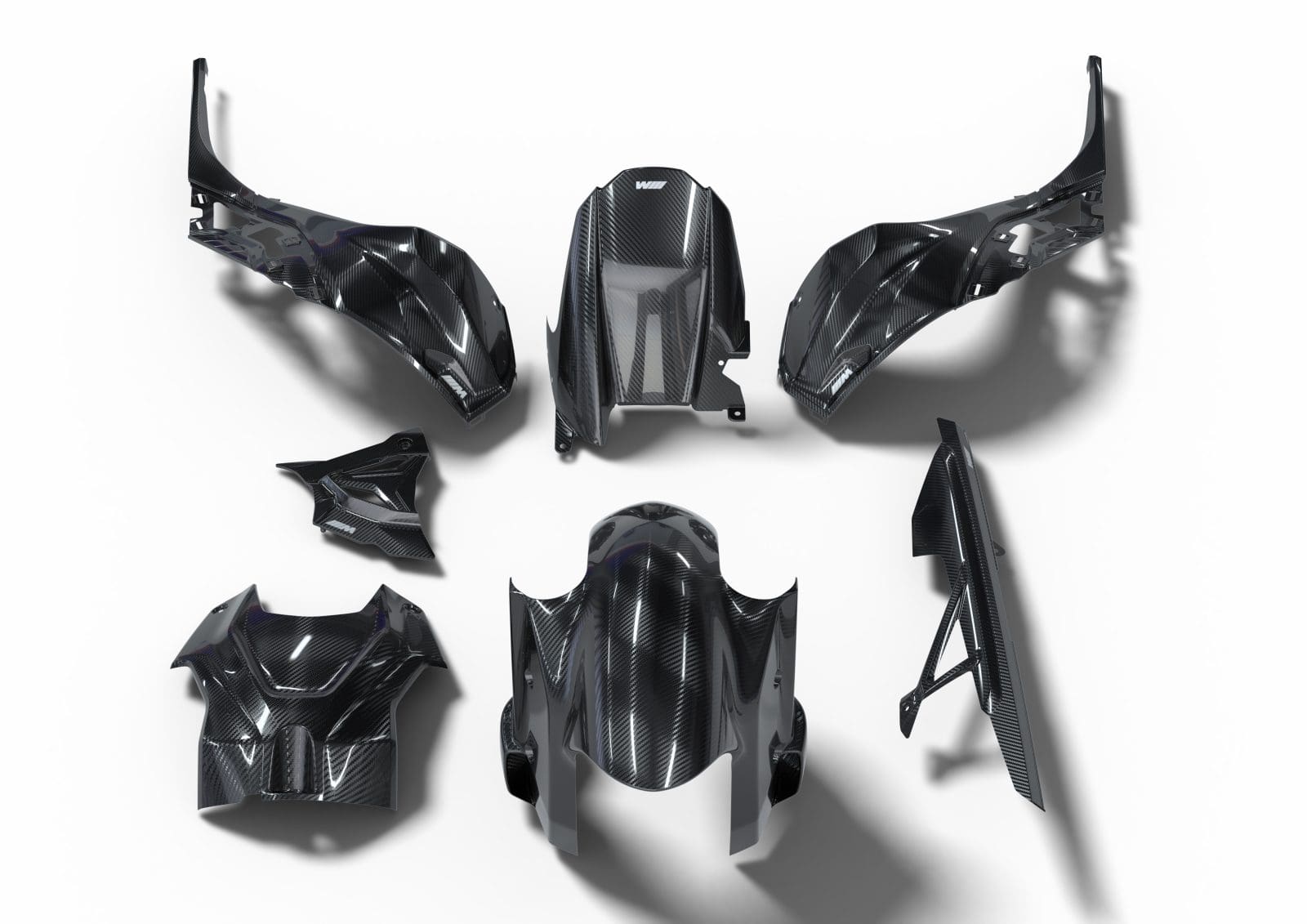
While there’s no change to the 999cc ShiftCam engine for 2023 you’re unlikely to feel short-changed by 156kW output that peaks at a wild 14,500rpm (750rpm higher than the standard S 1000 RR). At Mugello we tested the European version, not the restricted US version with 153kW (205hp) at 13,000rpm. Thankfully we get the full-fat full-power version here in Oz.
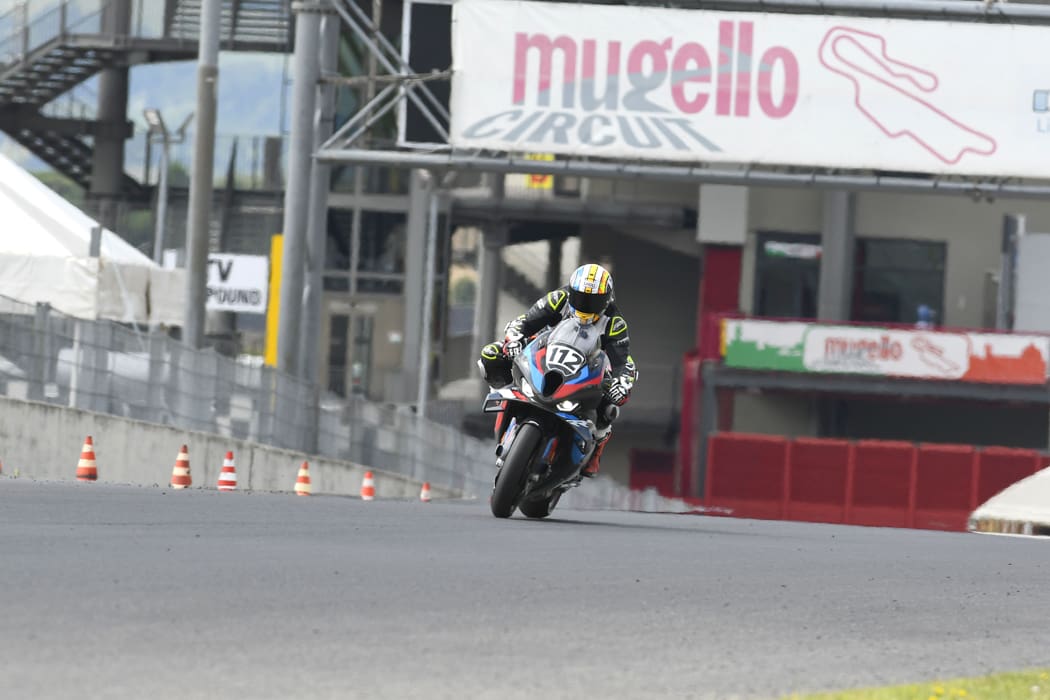
Comparing the torque curves of the S 1000 RR and the M 1000 RR shows the S has more grunt below 5500rpm, but I only let the revs drop this low when riding down the Mugello pitlane! While both machines get the company’s ShiftCam variable valve timing and lift system, the M gets lighter conrods, a shorter intake funnel (for higher revving output) and a lightweight titanium exhaust system.

The M’s inline-four loves to rev, and revs on happily to 15,000rpm – and I was told by Corser to make use of every last rpm. According to the experts, it’s preferable to take the final turn at Mugello in second gear: to go deep, then cut back, pick the bike up and get on the power early. Then it’s a matter of holding the throttle wide open and tap through the gears on the smooth and, for this test, race-pattern quickshifter.
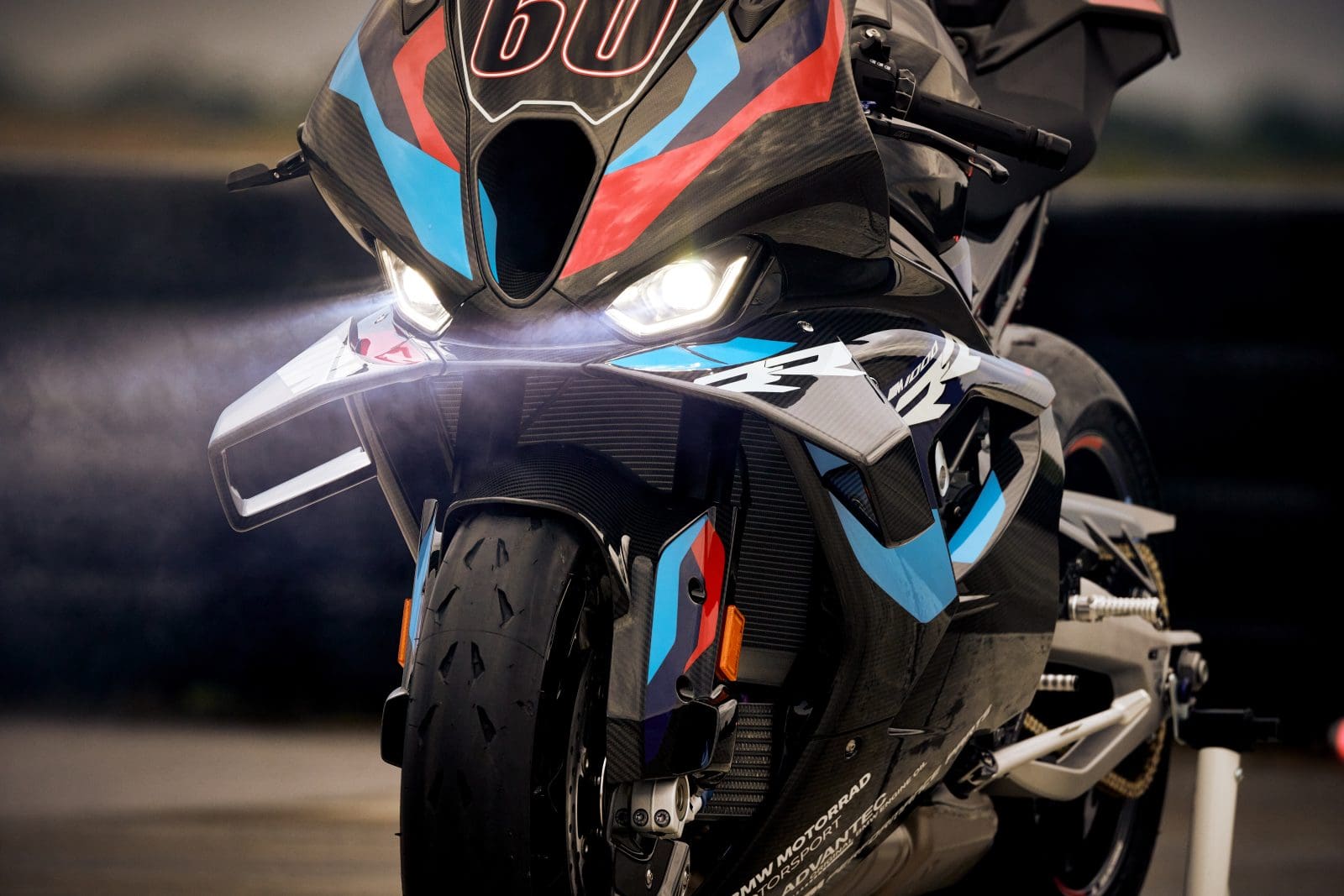
At which point the M blew me away. Over that crest at the end of the straight, the M’s digital speedo passed 300km/h every lap. So long as I got a good drive out of the final turn and then stayed tucked, it’s relatively easy to reach that speed. Just tuck in behind all that carbon bodywork and try not to miss your braking marker…
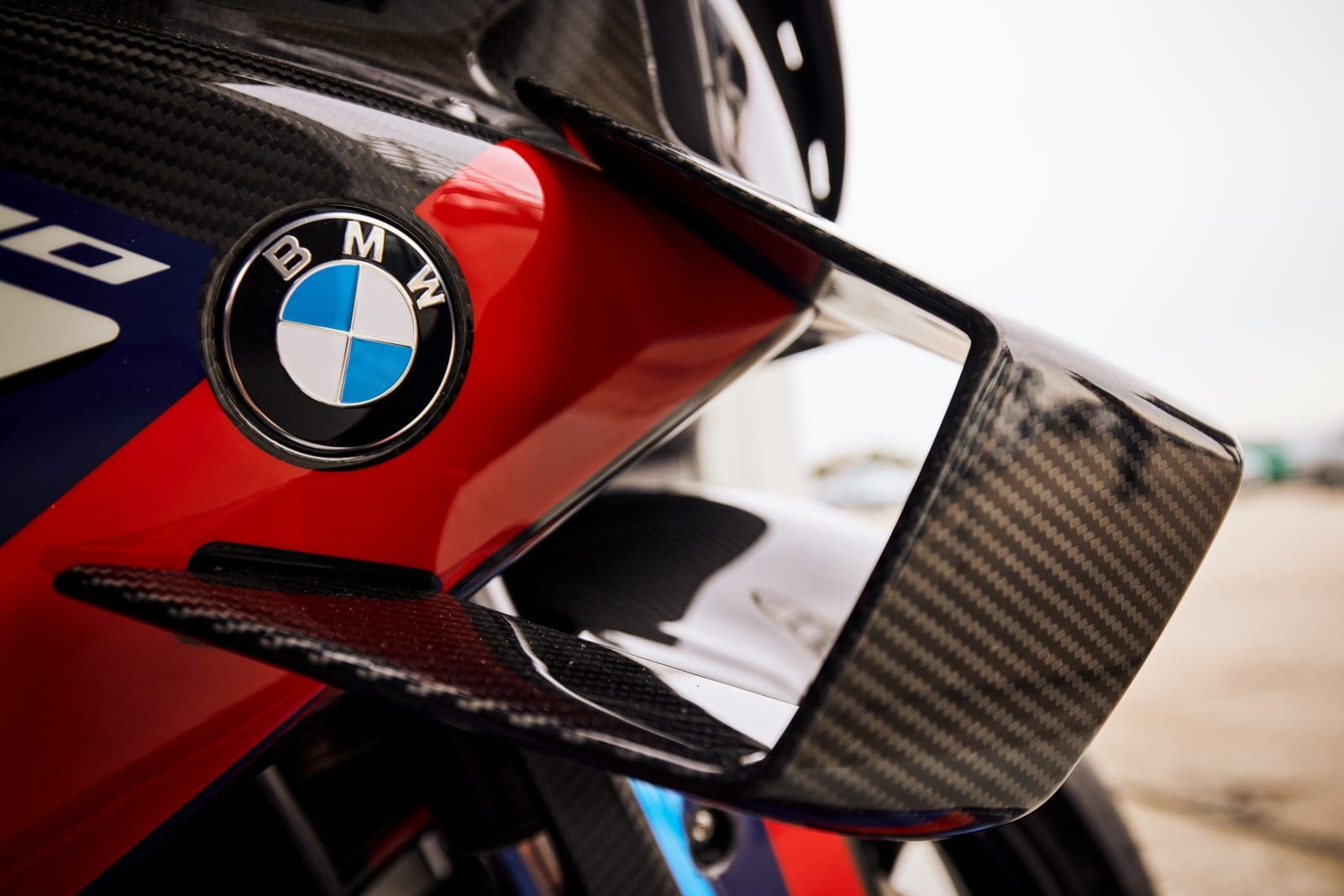
On a good lap, the M hit 304km/h before I hit the stoppers. What’s more, this road-legal bike remember, was still accelerating and, with the tacho showing 14,000rpm still to reach peak power, let alone the rev limiter at 15,100rpm.
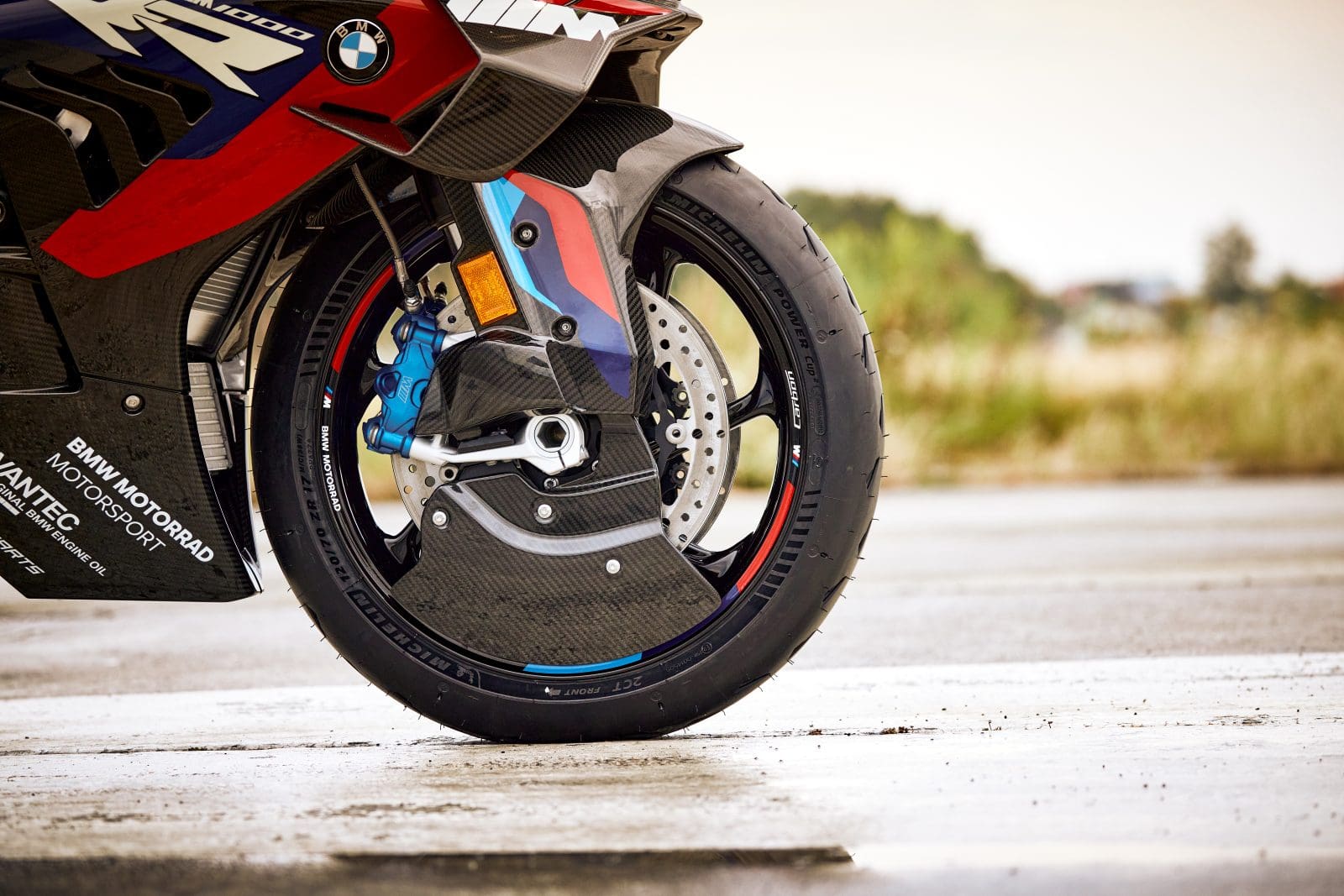
The S 1000 RR is a superbike capable of seriously quick lap times, but the M was noticeably quicker off the turns and freer revving, too, and despite my best efforts, I couldn’t coax the S 1000 RR to the magic 186mph (300kph) at the end of the Mugello straight. Ride the two machines back-to-back and the way the M accelerates between Mugello’s chicanes is pure racebike. You can feel the electronic rider aids working overtime, balancing low, hovering wheelies with relentless traction – hundredths, tenths, even whole seconds falling away from your normal lap time.

The 2023 M 1000 RR’s brake set-up remains the same and stops the same number of kilos too, but in theory does so from a higher top speed. Mugello is very hard on the brakes: slowing from 300km/h in sixth gear to a second-gear hairpin is a big ask lap after lap, but the M-stoppers stayed free of fade and were consistent lap after lap, allowing me to push my brake marker back with confidence, this could be attributed to the new ducts which cut the temperature of the radial-mounted M brake calipers and disc.

Despite its ferocious power and speed, the M is focused on making life as easy and stress-free for the rider as possible. Lightness, protective bodywork and superlative electronic rider aids make a difference on track – even when pushing for lap times in 30-degree-plus heat, I didn’t feel tired – and the same should be true for the road. The sizeable bodywork and tall screen in particular give your upper body a relatively easy time, cocooned from turbulence once tucked.
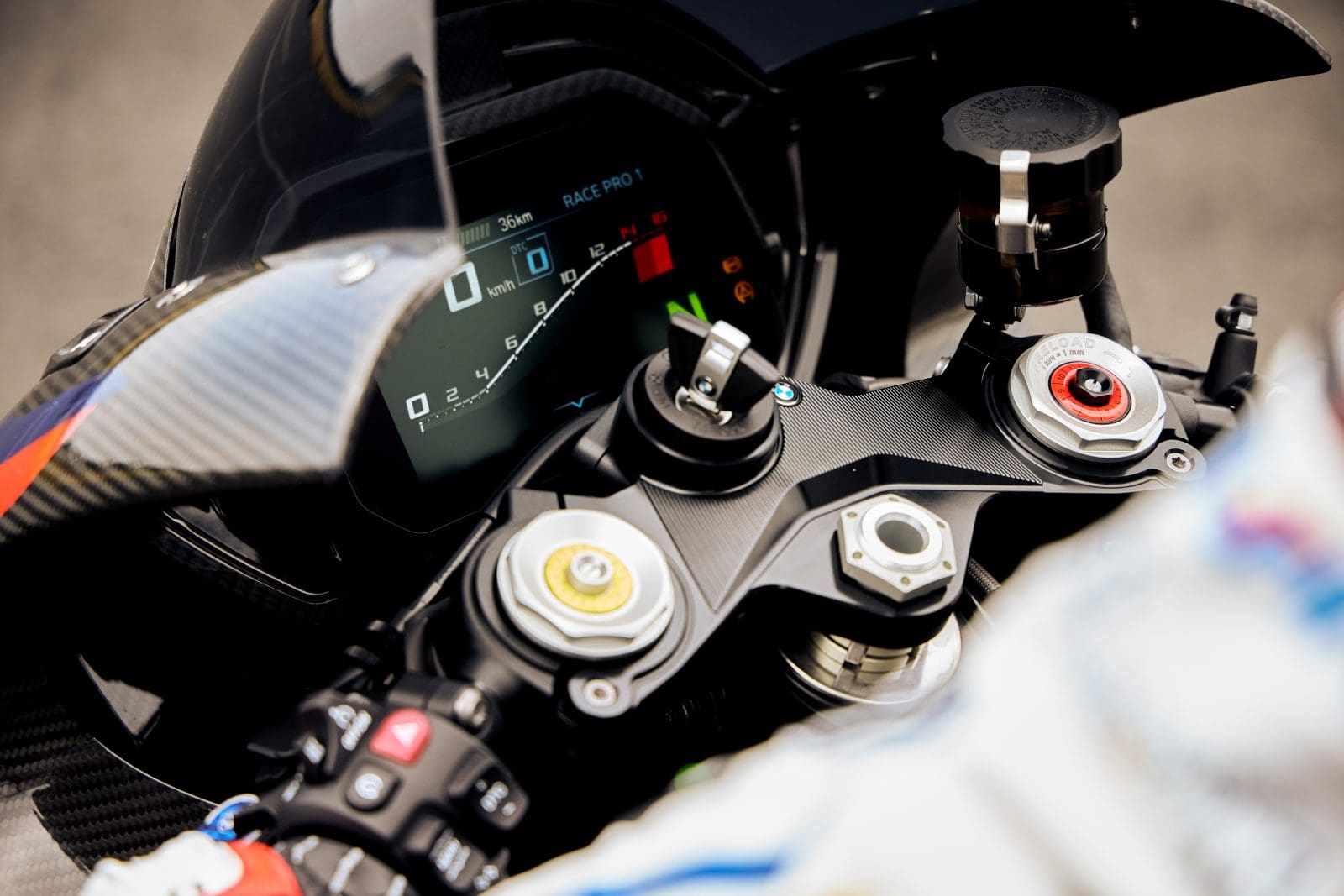
The list of rider aids is predictably long, but the standard S 1000 RR is a little more advanced in some respects given that the M does not come equipped with the steering sensor that measures how much you turn into a slide. The riding modes are Rain, Road, Dynamic and Race plus three ‘Race Pro’ settings. There is cornering traction control, wheelie control, adjustable throttle characteristics, three engine brake settings and that excellent two-way quickshifter. There is also launch control, a pitlane speed limiter, hill start assist and, because this is a BMW, heated grips and cruise control.

The M 1000 RR’s closest rival is Ducati’s homologated Panigale V4 R, which I tested at Misano and appeared last issue. The Ducati has more power and revs even higher but has slightly less torque. Both bikes weigh around the same and have a similar level of electronics. While the Ducati is dominating in WorldSBK, the Beemer won at the Isle of Man and is perhaps marginally easier to ride.
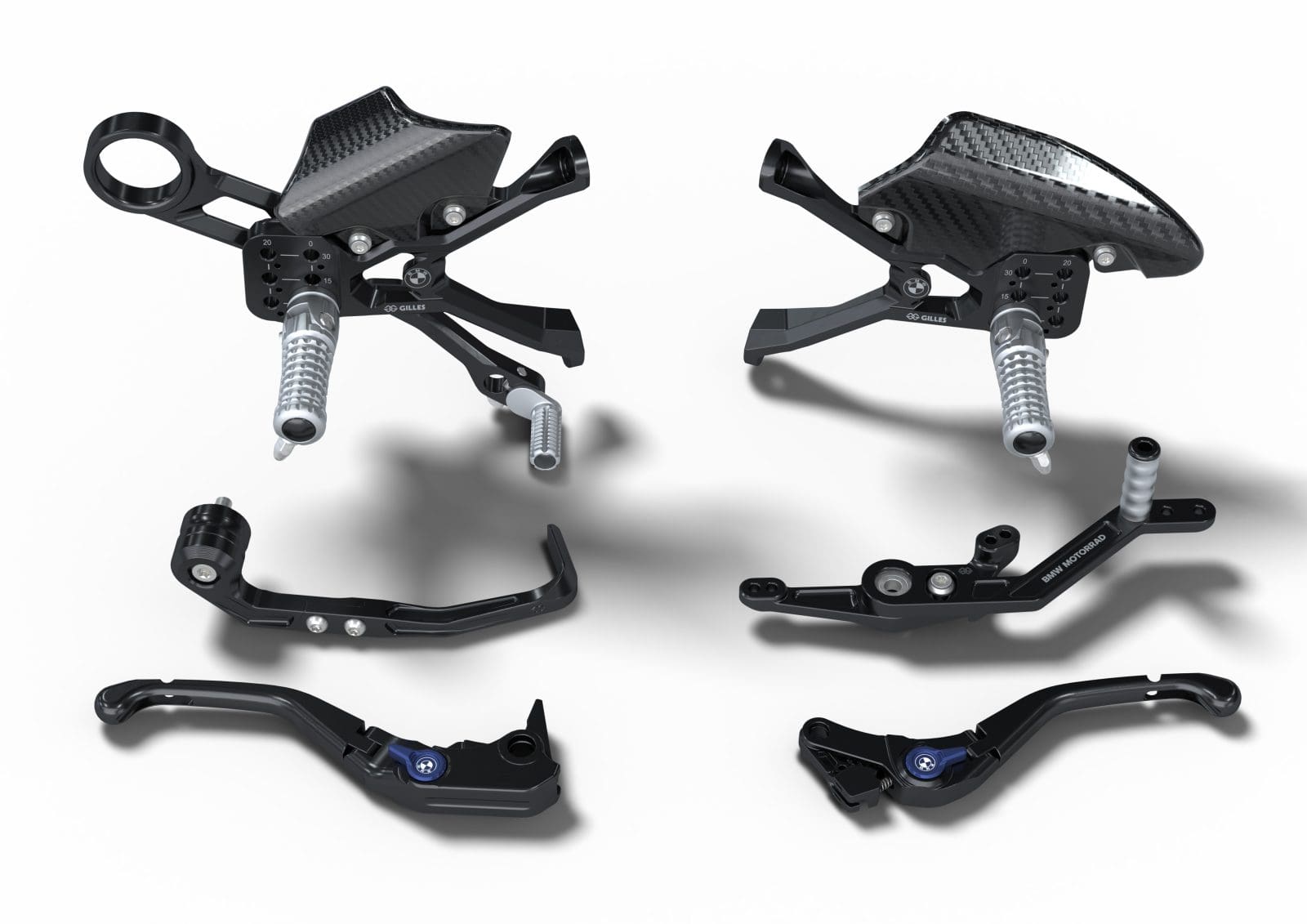
After all, it hit 300km/h every lap at Mugello yet remained as stable as a cruiser out for a Sunday run to the coast. From braking point to apex, it’s as agile as a 600cc supersport and carries more corner speed and lean angle than possibly any current road-legal machine I can name.
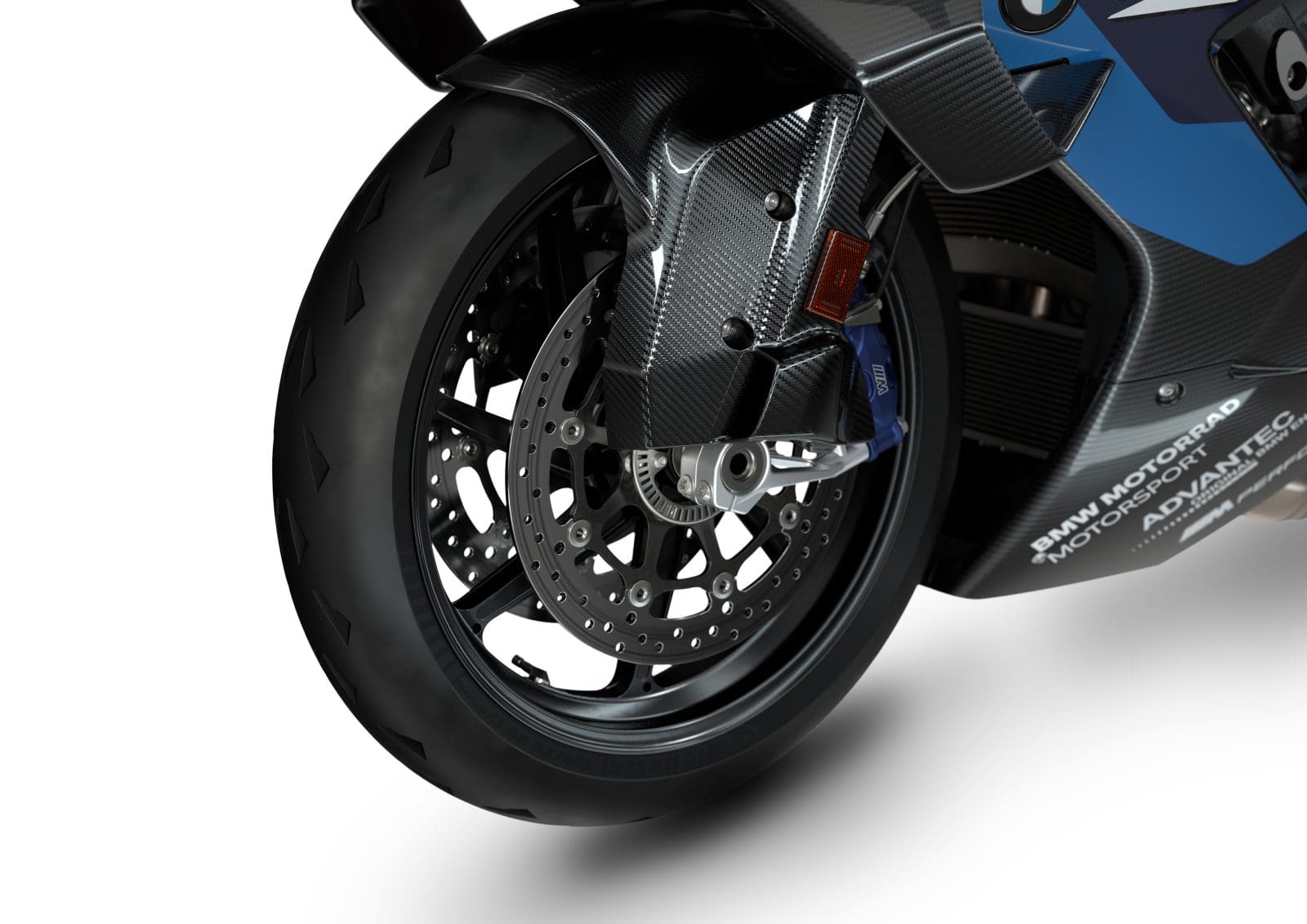
Crucially, I can’t remember the last time I rode a bike so hard and fast without having to push beyond my personal limit. Even at high speeds, when the wind blast should be tearing at your leathers, the bodywork allows you to get tucked away like the very best TT bike.

It’s truly amazing what you can get away with, how late you can brake, how hard you can lean.
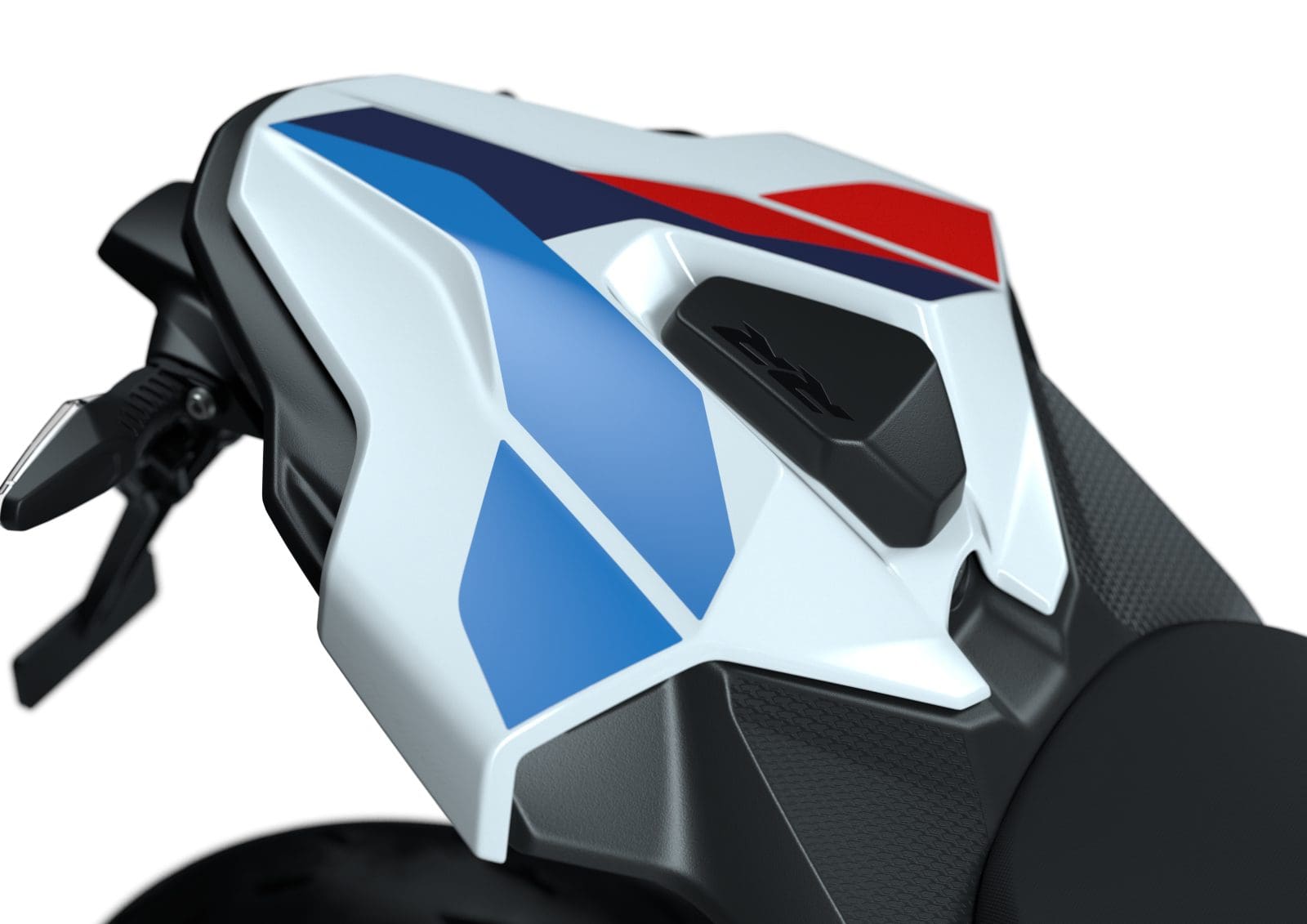
A short while ago I stated that the standard S 1000 RR was one of the very best bikes you could ever ride around a racetrack; well, it still is of course, but the M 1000 RR is one step above, and goes as fast as it looks.

Test Adam Child + Photography fotoeventi.com